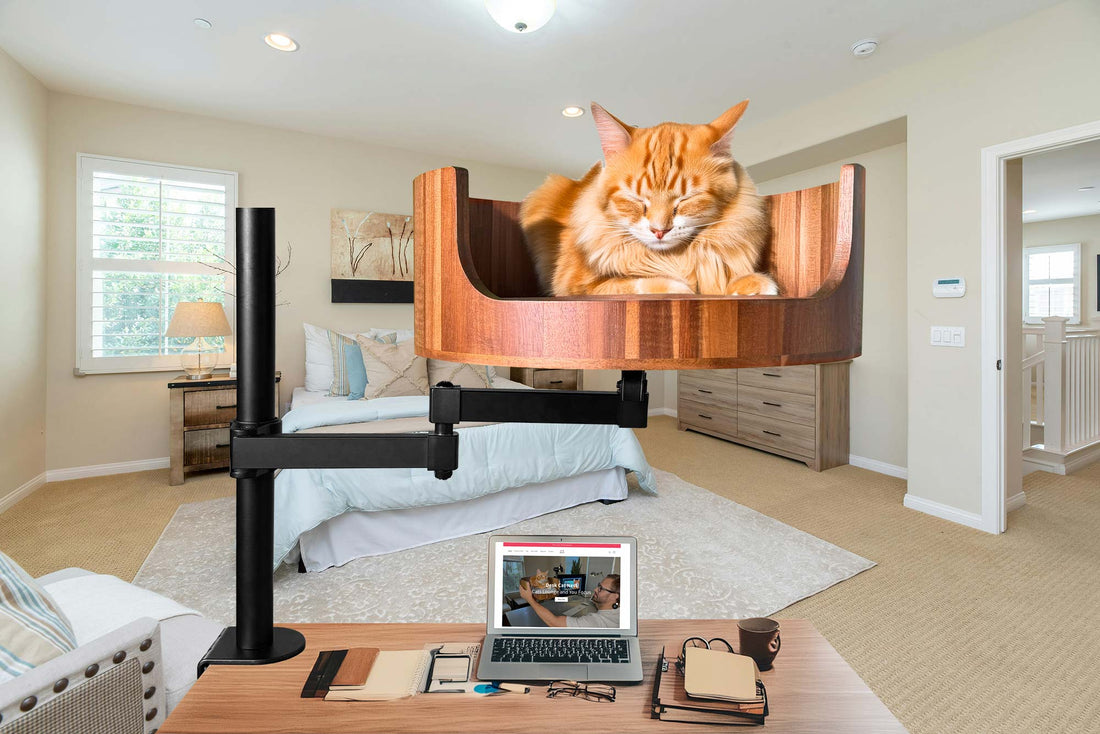
Why Do Cats Bite and Then Lick: Understanding Their Behavior
Share
If you've ever owned a cat, chances are you've experienced the perplexing behavior of being bitten and then licked by your feline friend. While this may seem like a strange and contradictory behavior, it is actually quite common among cats. In this article, we will delve into the fascinating world of feline behavior to understand why cats exhibit this behavior and what it means.
One possible explanation for why cats bite and then lick is rooted in their natural instincts. Cats are predators by nature, and biting is a normal part of their hunting behavior. By biting and then licking, cats may be mimicking the actions of a mother cat with her kittens, who would deliver a gentle bite to correct behavior and then lick to show affection. Additionally, licking is a way for cats to groom themselves and their loved ones, so by following a bite with a lick, they may be trying to demonstrate their care and affection. Understanding these underlying instincts can help us decipher the complex world of feline behavior and develop a deeper bond with our furry companions.
1. Cats may bite and then lick their humans as a form of communication, often to express affection or to establish boundaries.
2. Understanding cat body language and vocalizations can help decipher the reason behind their behavior of biting and licking.
3. Cats may exhibit this behavior when they are overstimulated or experiencing stress, so it's important to be mindful of their cues.
4. Providing appropriate outlets for play, exercise, and mental stimulation can help prevent cats from resorting to biting and licking as a way to release pent-up energy.
5. Building a strong bond with your cat through positive reinforcement and patience can help minimize instances of biting and licking.
## Reasons for Biting
Cats can bite for various reasons such as play aggression, fear, pain, or overstimulation. In the case of play aggression, cats may bite as they are excited or trying to engage in playful behavior. Fear-induced biting occurs when a cat feels threatened or scared, leading it to bite as a form of self-defense. Pain can also cause cats to bite, especially if they are injured or in discomfort. Overstimulation is another common reason for biting, as cats may become overwhelmed with too much petting or attention.
## Significance of Licking After Biting
After biting, cats often exhibit a behavior known as 'redirected grooming,' where they lick themselves or the person they bit. This behavior serves as a way for cats to calm themselves down after a stressful or agitated situation. Licking can also be a form of apology from the cat, showing that they did not intend to cause harm and are trying to make amends. Additionally, licking after biting can help cats reduce their anxiety and distress, acting as a self-soothing mechanism.
## How to Handle Biting Behavior
To address biting behavior in cats, it is essential to understand the underlying cause of the biting and address it accordingly. For play aggression, providing interactive toys and engaging in play sessions can help redirect the cat's energy. Fear-induced biting may require creating a safe and secure environment for the cat to reduce anxiety triggers. In cases of pain-induced biting, seeking veterinary care to address underlying health issues is crucial. Overstimulation can be managed by learning to recognize the cat's body language and cues, giving them breaks when needed.
## Seeking Professional Help
If a cat's biting behavior persists despite attempts to address it at home, seeking professional help from a veterinarian or animal behaviorist is recommended. These professionals can assess the cat's behavior, provide guidance on behavior modification techniques, and offer additional support to help manage and reduce biting incidents. Working with experts can help improve the cat's overall well-being and enhance the relationship between the cat and its owner.
Frequently Asked Questions about Why Cats Bite and Then Lick
Why do cats bite and then lick?
Cats bite and then lick as a form of grooming behavior. When a cat bites you gently and then licks the same spot, it's their way of showing affection and care. This behavior mimics how a mother cat would groom her kittens.
Is it normal for my cat to bite and then lick me?
Yes, it is normal for your cat to exhibit this behavior. It typically signifies that your cat sees you as part of their family and is showing you affection. However, if the biting becomes aggressive or painful, it's important to consult a veterinarian or animal behaviorist.
How can I prevent my cat from biting and then licking me?
While it's generally a sign of affection, you can redirect this behavior by providing your cat with appropriate toys for them to bite and groom. Additionally, reinforcing positive behavior through rewards and treats can help discourage biting during grooming sessions.
Are there any health concerns associated with cats biting and then licking?
In most cases, there are no health concerns associated with this behavior. However, it's crucial to keep an eye on your cat's dental health and skin condition to ensure that their grooming habits aren't causing any harm. If you notice any signs of irritation or discomfort, consult a veterinarian for further advice.
In conclusion, providing your cat with a comfortable and secure space to rest, such as the Desk Cat Bed, can help address the behavior of biting and then licking. The elevated design of the bed allows your cat to feel safe and secure, reducing their potential stress and anxiety. With its soft and cozy materials, your cat will be more likely to use the bed regularly, providing them with a calm and comforting environment. Ultimately, investing in a Desk Cat Bed can not only improve your cat's behavior, but also enhance their overall well-being and happiness.



















































